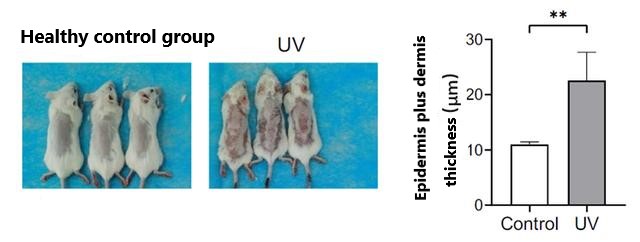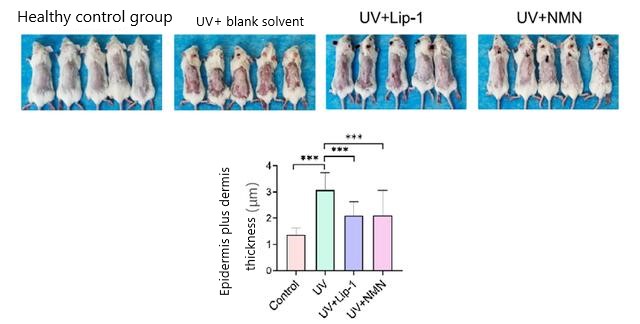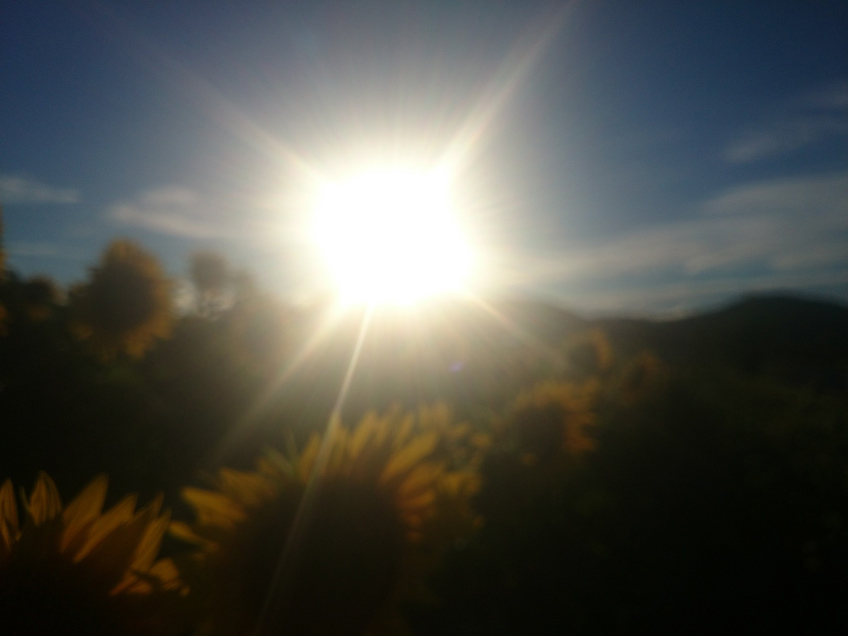Fourth Military Medical University: Oral NMN inhibits UV-induced skin damage
The damage of Ultraviolet (UV) to the skin has been widely known, and it is also the main cause of skin aging and wrinkles.
But the mechanism of a type of action called Ferroptosis caused by ultraviolet light was only gradually clarified after 2012.
In short, iron death is the process by which iron ions (Fe2+) accumulate in cells, causing them to die from reactive oxygen species attack.
A study by the Fourth Military Medical University found that oral NMN (niacinamide mononucleotide) can effectively inhibit the damage caused by ultraviolet light on the skin of mice, and this process is achieved by inhibiting the iron death of skin cells.
The research was published in January 2022 in the journal Biochimica et Biophysica Acta.

In the experiment, the researchers first shaved the hair on the back of the mice, and then subjected the skin of the mice’s back to high intensity ultraviolet light.
This resulted in severe edema of the skin behind the mice,
and a substantial increase in the thickness of both the epidermis and dermis.
The researchers also found that damage caused by UV light highly correlated with the process of iron death in cells. China NMN manufacturers
Previous studies have shown that when iron death occurs, the concentration of iron ion (Fe2+) in cells increases significantly and induces the peroxidation of lipids in cells,
resulting in cells being unable to cope with the attack of a large number of reactive oxygen species (ROS) and eventually apoptosis.
In the experiment, the expression of the transferrin receptor (TFRC) in the skin cells of mice greatly increased after ultraviolet irradiation,
which led to more iron ions transported to the cells.
At the same time, the expression levels of 4-HNE and 8-OHdG proteins also increased significantly,
which proved that lipid peroxidation occurred in cells.

Next, the researchers gave the mice 400mg/kg (equivalent to 1.8g in humans) of NMN orally through drinking water every day for a week after UV exposure.
At the same time, the researchers also gave another group of mice daily injections of another powerful iron death inhibitor, Lip-1, to measure the effect of NMN.
The results showed that both NMN and Lip-1 significantly reduced the damage of ultraviolet light on the skin of mice,
and the degree of skin edema significantly reduced.

In addition, NMN also significantly reduced the expression level of iron transporter receptors in cells,
and significantly decreased the expression levels of two proteins, 4-HNE and 8-OHdG,
demonstrating that it can effectively reduce the damage of ultraviolet light on the skin of mice by inhibiting the process of iron death in cells.
The effect of the iron death inhibitor Lip-1 is similar.

In fact, a study published in March 2021 showed that oral NMN plus lactic acid bacteria can help mice combat UV damage,
and this process highly correlated with the protection against oxidative damage caused by UV rays.
This study has proved that NMN alone is equally effective,
and the mechanism of action against cell iron death has also been clarified.
Therefore, this study provides detailed theoretical support for future clinical trials of NMN against UV damage.
References:
- 1. Feng, Z., Qin, Y., Huo, F., Jian, Z., Li, X., Geng, J., Li, Y., & Wu, J. (2022). NMN recruits GSH to enhance GPX4-mediated ferroptosis defense in UV irradiation induced skin injury. Biochimica et biophysica acta. Molecular basis of disease, 1868(1), 166287. https://doi.org/10.1016/j.bbadis.2021.166287
- 2. Zhou, X., Du, H. H., Ni, L., Ran, J., Hu, J., Yu, J., & Zhao, X. (2021). Nicotinamide Mononucleotide Combined With Lactobacillus fermentum TKSN041 Reduces the Photoaging Damage in Murine Skin by Activating AMPK Signaling Pathway. Frontiers in pharmacology, 12, 643089. https://doi.org/10.3389/fphar.2021.643089



